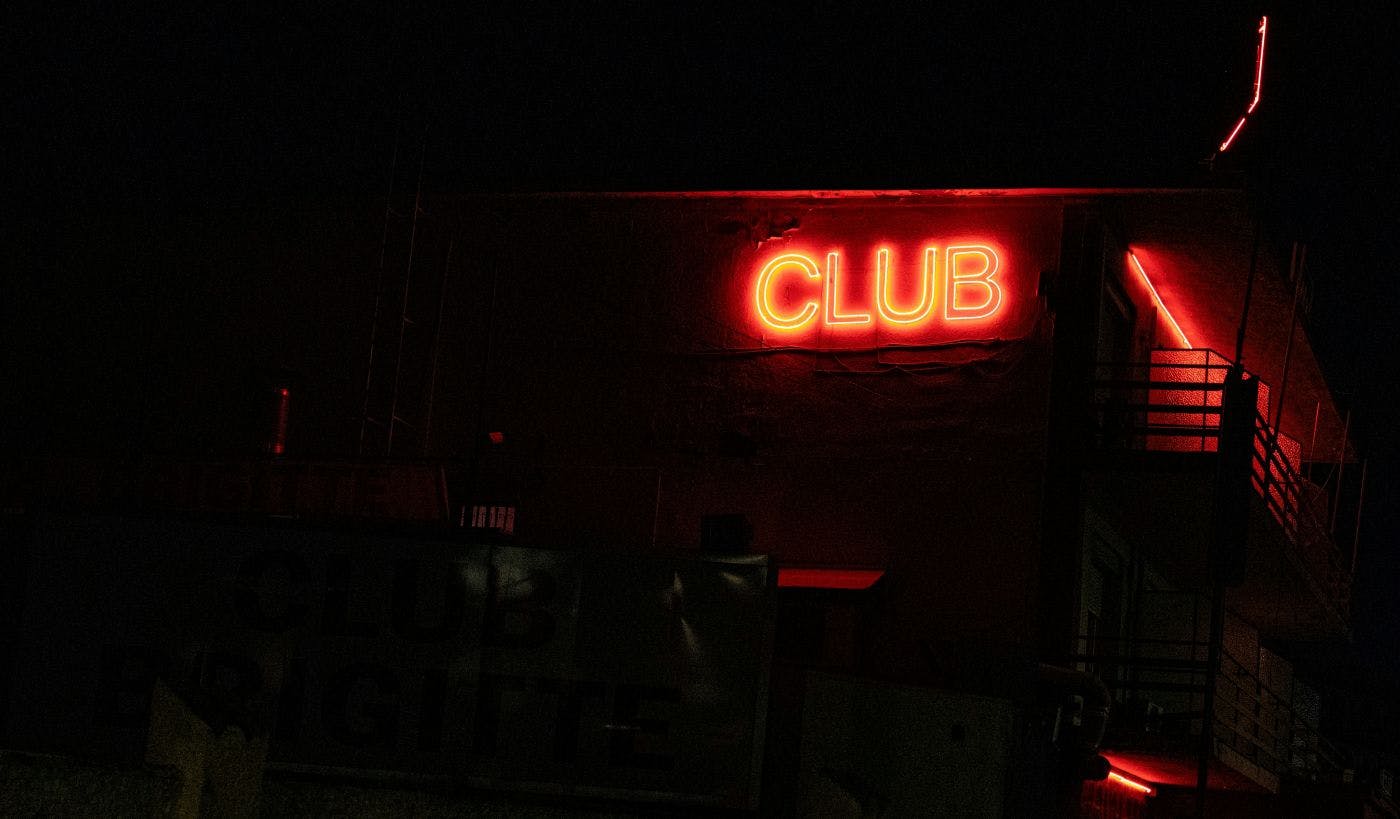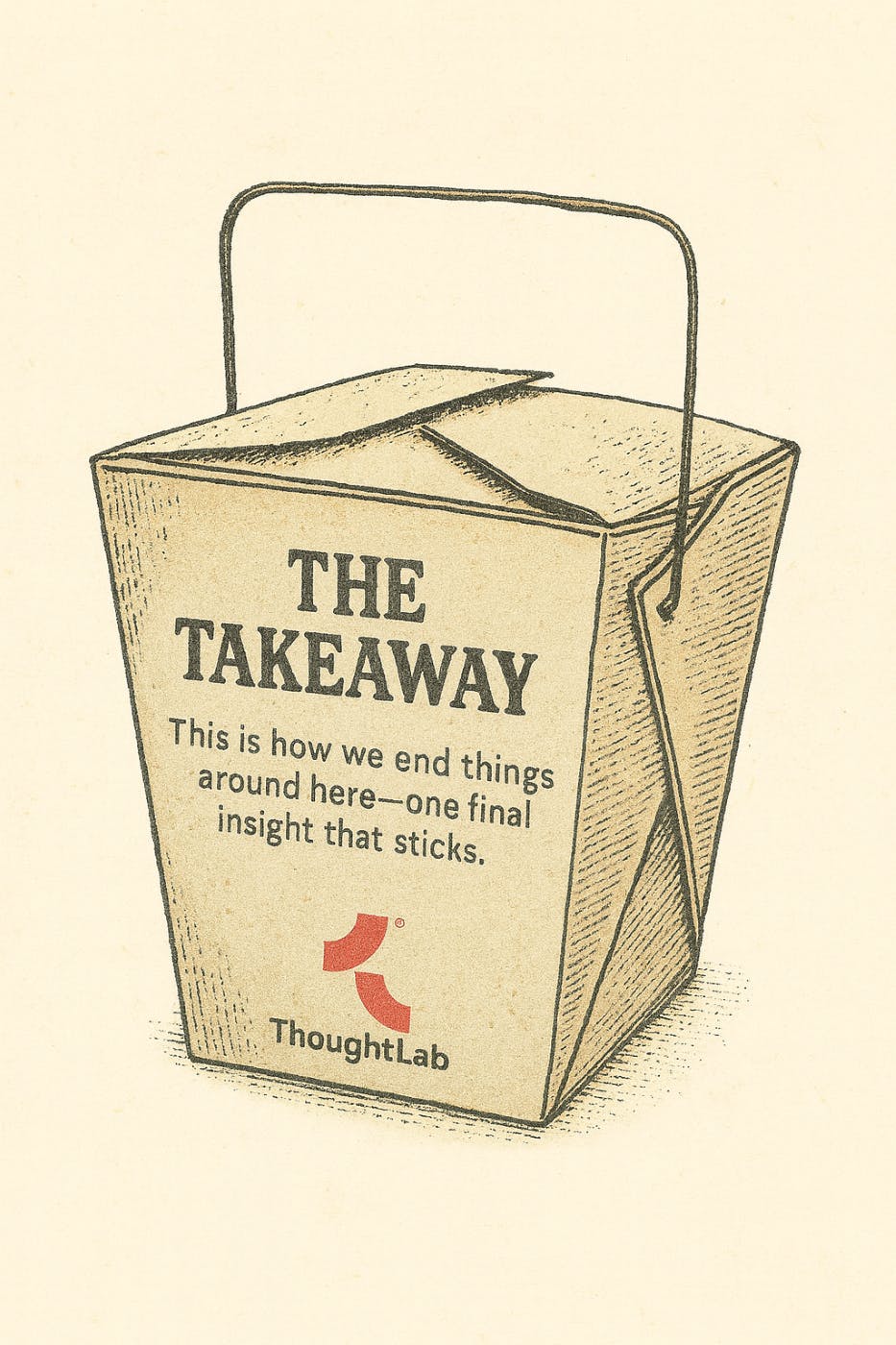

Most brands don’t get people. Not because they’re bad at what they do—but because they’re stuck in a cycle of performance.
When it comes to groups, clubs, and social gatherings, I have tried to live by the Groucho Marx maxim: “I wouldn't want to belong to a club that would have me as a member.”
Now, when the great Groucho said it, then it was funny. But I don’t usually think of it as funny; I see it as a deflection. Not many clubs want me to be a member. I am not wealthy, smart, stylish, or hip. I have nothing to offer a club that requires membership.
The plush velvet curtains have never parted for me, nor have the velvet ropes, which miraculously hold back the hordes clotted before them, praying for entrance into the sacred halls of “in,” “with it,” “trending,” or even “hip,” ever dropped to let me through. I’m the guy across the street in his bathrobe and slippers, wandering the streets at night like a homeless nightmare from a Poe poem, munching on a street vendor’s hot dog, wondering how all those people knew how to get it, how to act, how to be the kind of person that velvet ropes drop for.
There are those who get it. Who seem to know from birth the right clothes to wear, the right car to drive, the right place to eat, and on and on. Those people are in clubs and walk into those clubs unhindered by muscle-bound bouncers. No worries for these folks, they are members, they get the deal, and know all the secrets.
Those of us who grew up on Campbell’s soup and running paper routes on our hand-me-down Schwinn bikes are just not part of that crowd—and, you know, that’s okay. After a time, you get used to it. You no longer gape at the crowds and the fashion. You just accept that you’re just a guy living your life out in the open—no walls, no curtains, no ropes to hold the masses back.
That’s just life. That happens to a lot of us now and then.
But what about brands?

The Challenge: Why Most Brands Don’t Get People
Most brands don’t get people. Not because they’re bad at what they do—but because they’re stuck in a cycle of performance. They’re too busy chasing metrics, tweaking funnels, and optimizing conversions to actually pay attention to the people on the other side of the screen.
They shout louder, launch faster, drop phrases like “authentic connection” in boardrooms—and still somehow miss the mark. You can feel it, can’t you? That moment when you read an ad or land on a homepage and think, “This is clearly not for me.” It’s all flash, no feel. All signal, no soul.
Brands today are experts at making noise, but not meaning. They deliver messages, not moments. They’re brilliant at catching eyes—but forget to hold hearts. And we notice. We notice when we’re being sold to instead of spoken to.
It’s not malice—it’s misalignment. Marketing has become a treadmill: constant motion, zero momentum. The result? Campaigns that sound polished but land hollow. And in a world where attention is currency, brands that don't connect get left behind.
But the ones who do? They don’t just grab attention—they earn affection. They operate on a different frequency altogether. They listen, observe, adapt, and create the kinds of experiences that make people lean in. These are the brands that get it. These are the ones in the club.
And here’s the twist: most of the brands in this club didn’t get there by accident. Someone inside chose differently. Chose to think like a person instead of a marketer. Chose to build trust, not just awareness. Chose to stay curious about what people need instead of obsessing over what the brand wants to say.
And perhaps most importantly, they chose to make space for feeling. Not just messaging, not just branding, but that rare and valuable sensation of being understood.
What It Means to Actually Get People
So, what does it mean to actually get people? It’s not about clever taglines or seasonal email blasts. It’s about showing up in a way that feels personal, intuitive, and—most importantly—human.
Let’s go ahead and get it out of the way:
<br />Patagonia. Yes, we know. We use them all the time. But it’s not our fault—they make it so easy.They don’t just sell jackets. They sell conviction. Identity. A slightly self-righteous—but very wearable—sense of belonging. They understand their people because they are their people. And that’s the whole trick.
But Patagonia’s not alone.
<br />Trader Joe’s gets people who don’t want their groceries to feel like a board meeting.<br />Apple gets people who don’t want to read a manual.<br />Netflix gets people who just want the next show to magically know what kind of existential comfort they need.
When a brand gets people, it shows up in three core ways:
1. They anticipate, without asking.
Great brands know what you need before you do. Not because they’re psychic—but because they’re paying attention. Patterns, feedback, behavior—they track it all, and they use it thoughtfully.
2. They create emotional continuity.
There’s a feeling you get from them. It’s consistent, comforting, and unmistakable. Every touchpoint aligns—not in a manufactured way, but in a way that feels like someone actually cared about your experience. That emotional thread—woven through product, packaging, voice, and service—tells you, “You’re understood here.” And once you feel it, you don’t forget it.
3. They delight in small, specific ways.
A handwritten thank-you. A perfectly timed update. A product detail you didn’t expect but now can’t live without. Delight doesn’t have to be grand. It just has to feel true.
These brands don’t try to be “everything for everyone.” They just try to be right for someone. That difference is subtle—but it’s the entire game.
Getting people is a quiet superpower in business. And the brands that master it? They become unforgettable.

The Secret Club: Brands That Truly Get People
Let’s talk about the insiders. The brands that walk right past the velvet ropes—not because they demanded attention, but because they earned it.
Here’s your peek at a few card-carrying members of the Secret Club:
Patagonia<br />We can’t not include them. They’re the patron saint of brands who get it. They make you feel like buying a jacket is an act of protest. That patch on your sleeve? It’s a badge of values. If Patagonia were a person, they’d show up to the party with a reusable bottle, a passionate rant about microplastics, and somehow still be cool.
Trader Joe’s<br />No loyalty card. No app. No digital coupons. Just a store where people smile, hand-write signs, and talk about cheese like it’s poetry. It’s a vibe. A friendly, slightly chaotic vibe that somehow works. Trader Joe’s knows their audience is part Whole Foods, part garage sale, and they make that work beautifully.
Apple<br />Yes, it’s premium. Yes, it’s a little smug. But when you open a MacBook and it just works, you remember why. Apple doesn’t make you read manuals. They make you feel like you’re already fluent. That’s design meeting empathy. That’s secret club behavior.
Netflix<br />It’s creepy how well it knows you. It’s also… comforting? You log in and there it is—your next favorite show, somehow ready before you even asked. Netflix doesn’t always get it right, but when they do, it’s uncanny. Algorithmic intimacy at its finest.
Airbnb<br />It’s not about places. It’s about feeling like you belong in those places. The treehouse in Oregon. The apartment in Tokyo. The cabin in Vermont. Airbnb taps into your inner romantic, your wanderer, your Pinterest board. It lets you try on a life.
These brands aren’t just selling. They’re signaling. They’re not trying to dominate—they’re trying to resonate. And we see it. We feel it. That’s why we trust them.
That’s why they’re in the club.
How Brands Can Join the Club
The velvet ropes don’t lift for brands that shout the loudest. They lift for brands that behave like humans—thoughtful, attentive, consistent. Joining the secret club isn’t about budget or size or cleverness. It’s about how you make people feel.
And while there’s no official handshake or initiation rite, there is a pattern. A way of showing up that others can feel—even if they can’t explain it. Here’s how you get the invite:
1. Listen like a human, not a CRM.
The best brands don’t just harvest data—they pay attention. Not to check a box, but to understand. They notice when something feels off. They pick up on silence as much as feedback. And they ask better questions: What are we missing? What are we hearing that we’re not acting on?
2. Design for people, not personas.
Real humans are messy, emotional, and inconsistent. We’re not bullet points in a deck. Great brands design with flexibility and forgiveness. They build experiences that meet people where they are, not where the spreadsheet says they should be.
3. Create rituals, not just transactions.
Beloved brands don’t live in the “buy now” moment. They build small, repeatable gestures people come to expect—and even look forward to. It might be a surprise-and-delight package insert. A consistent tone of voice. A weekly email that actually feels welcome. The point is: relationships are built on rhythm.
4. Make delight a system, not an accident.
If your best moments are one-offs, you’re not in the club yet. Club members operationalize delight. They don’t wait for inspiration—they embed it in the process. From onboarding flows to customer service scripts, delight becomes a brand behavior, not a marketing stunt.
5. Be consistent without being robotic.
People crave reliability, not repetition. The brands that stick don’t copy-paste the same message everywhere—they express the same truth everywhere, in language that adapts to the moment. They’re not static—they’re steady. You know them when you see them.
Joining the club isn’t about perfection. It’s about attunement. It’s about making the small decisions—the empathetic ones, the brave ones—over and over again, until people can feel it. Until your brand earns its place in their life.
That’s how you get in. That’s how you stay in.

The Takeaway
The truth is, most brands aren't in the secret club. Not because they can't be—but because they're too busy chasing attention to earn affection. Too busy optimizing for clicks to make someone feel seen.
But the brands that get people? They know the deeper game. They understand that trust isn’t a campaign. It’s a practice. That resonance isn’t built through volume—it’s built through care. It’s built in the quiet spaces:<br />The email that arrives just when you need it,<br />the product that solves a problem you didn’t know how to name,<br />the copy that makes you smile because it knows you.
That’s the club. That’s the brand people remember. Not because you told them to—but because you made them feel something they didn’t expect to feel from a brand.
At ThoughtLab, this is what we help brands do. Not shout louder, but connect deeper. Not just sell better, but mean more. We believe in brands that serve, surprise, and stick. Brands that act like humans because, in the end, humans are who they are for.
So here’s your takeaway, lovingly boxed up like late-night lo mein:
If you want to build a brand that lasts, stop chasing the crowd. Start tuning into the people. That’s how you get in. That’s how you stay in. That’s the real secret.
